WHAT WE’RE WATCHING
Tour de France: Unchained will make you really want to follow cycling
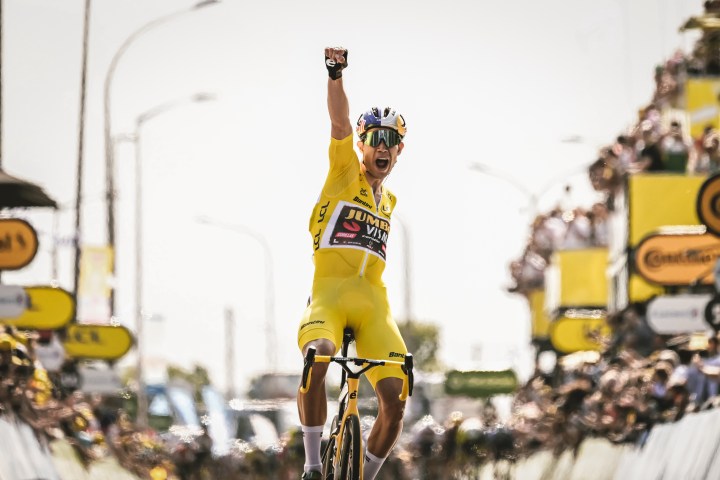
That’s it. In 15 seconds, someone who’s never cared about the Tour de France has a basic understanding, and feels ready for the highlights and spicy controversies that complicate it. Netflix is perfecting a sports docuseries formula that uses human interest, slick editing and frenetic footage to turn mainstream viewers into fans. The latest instalment will have you racing to catch this year’s Tour de France.
It’s the biggest bike race and the third biggest sporting event in the world, yet many people have no idea why. Tour de France: Unchained is an eight-part docuseries that uses the 21 stages of the 2022 Tour to show why this 3328-kilometre competition is a big deal.
It gives a behind-the-scenes view of the gruelling training for the race, team drafting politics, the technology that strives to turn riders into perfectly aerodynamic human engines, plus the dramatic shockers of the race itself.
Each episode follows a different group of top athletes, team managers, and directors at the race and their personal ambitions, setbacks and victories. With its high production quality and inside access, fans of the sport who know every twist and turn of the race will still find it insightful – clearly the documentary team spent a lot of shooting time with the riders because they capture every triumph and disaster, and their presence never feels like an imposition.
But first and foremost, this is a series optimised for viewers who have never cared much for cycling before. Strategic concepts such as team drafting, how pelotons work together, or how a rider actually wins the Tour, are broken down so quickly and matter-of-factly that viewers may not even realise it’s happening. By explaining the sport using human narratives, audiences become invested in teams’ personal stories and come to notice the details that shape the outcomes of each race.
The editing maintains a frenetic tension (as if the footage wasn’t fast-paced enough) thereby holding the attention of the uninitiated long enough to demonstrate why the Tour de France is such an excellent spectator sport. You’ll be mesmerised by the athletes’ determination, sculpted bodies and technical abilities, and will grimace at the spectacular crashes. The scale of the event is simply stupefying.
Where to watch it
Tour de France: Unchained is available on Netflix.
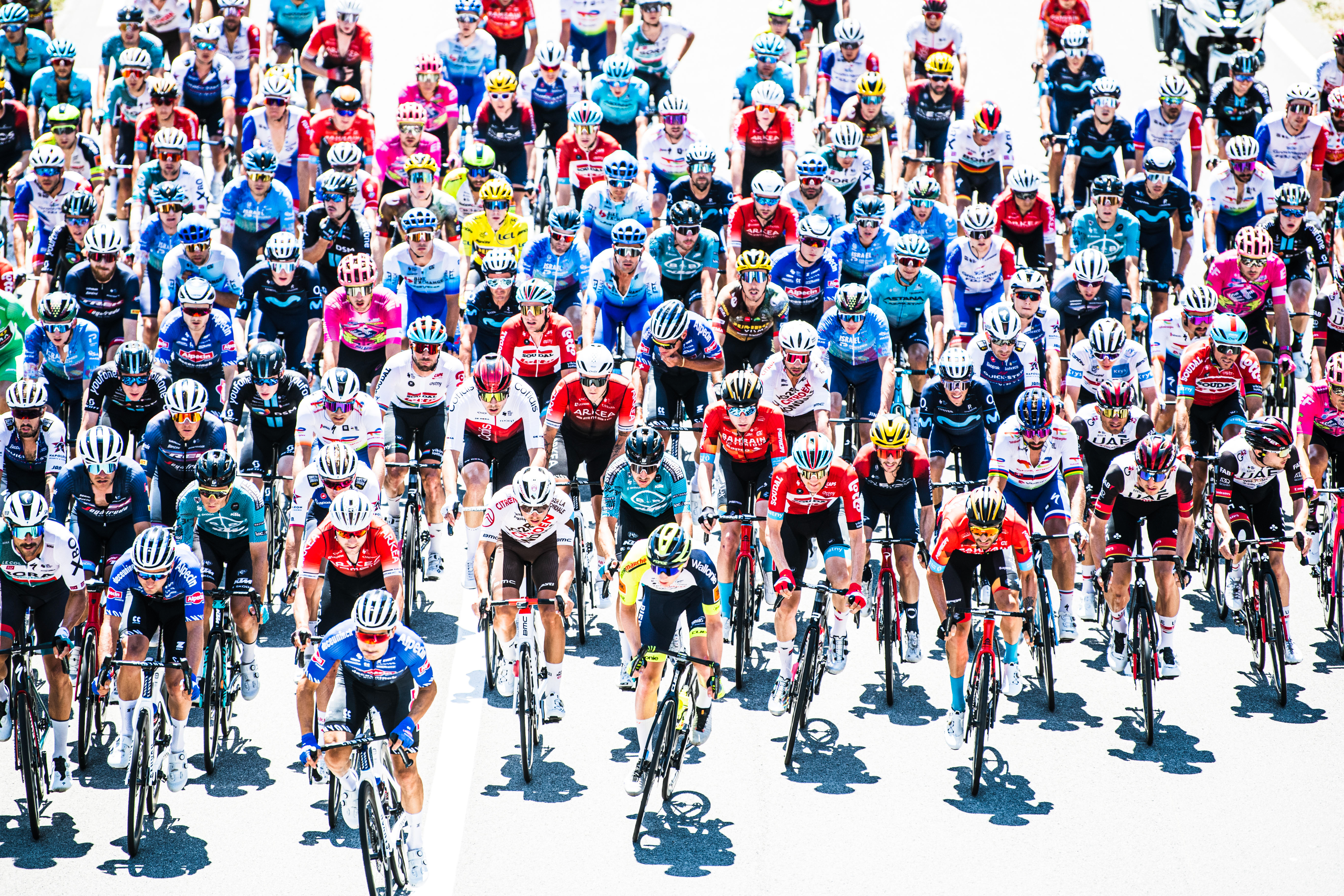
Tour de France 2022 – Stage 13 – Le Bourg d’oisans/Saint-Etienne (192,6km) on 15 July 2022. (Photo: Charly Lopez)
What’s the vibe?
The cinematography is slick and glossy. The score as dramatic and bass-heavy as a Transformers movie. The racing scenes themselves, shot at such high speeds and imbued with personal significance to the riders, are sometimes so intense and invigorating that they’re quite stressful to watch.
The series is produced by James Gay-Rees, who previously made excellent biopic documentaries – most notably, the A24 music doccies Amy and Oasis: Supersonic and the HBO film Diego Maradona. But more recently, Gay-Rees and his colleague Paul Martin have been finessing a format that is admittedly less subtle, but highly dependable, and apparently successful – the broad-appeal behind-the-scenes sports docuseries.
In 2016, the pair founded Box To Box Films, a production company that specialises in these kinds of “bringing the sport to the world” projects. So far they’ve tackled surfing in Make Or Break, tennis in Break Point, golf in Full Swing, Formula 1 in Drive To Survive and there is more on the way, including running, rugby and sumo wrestling.
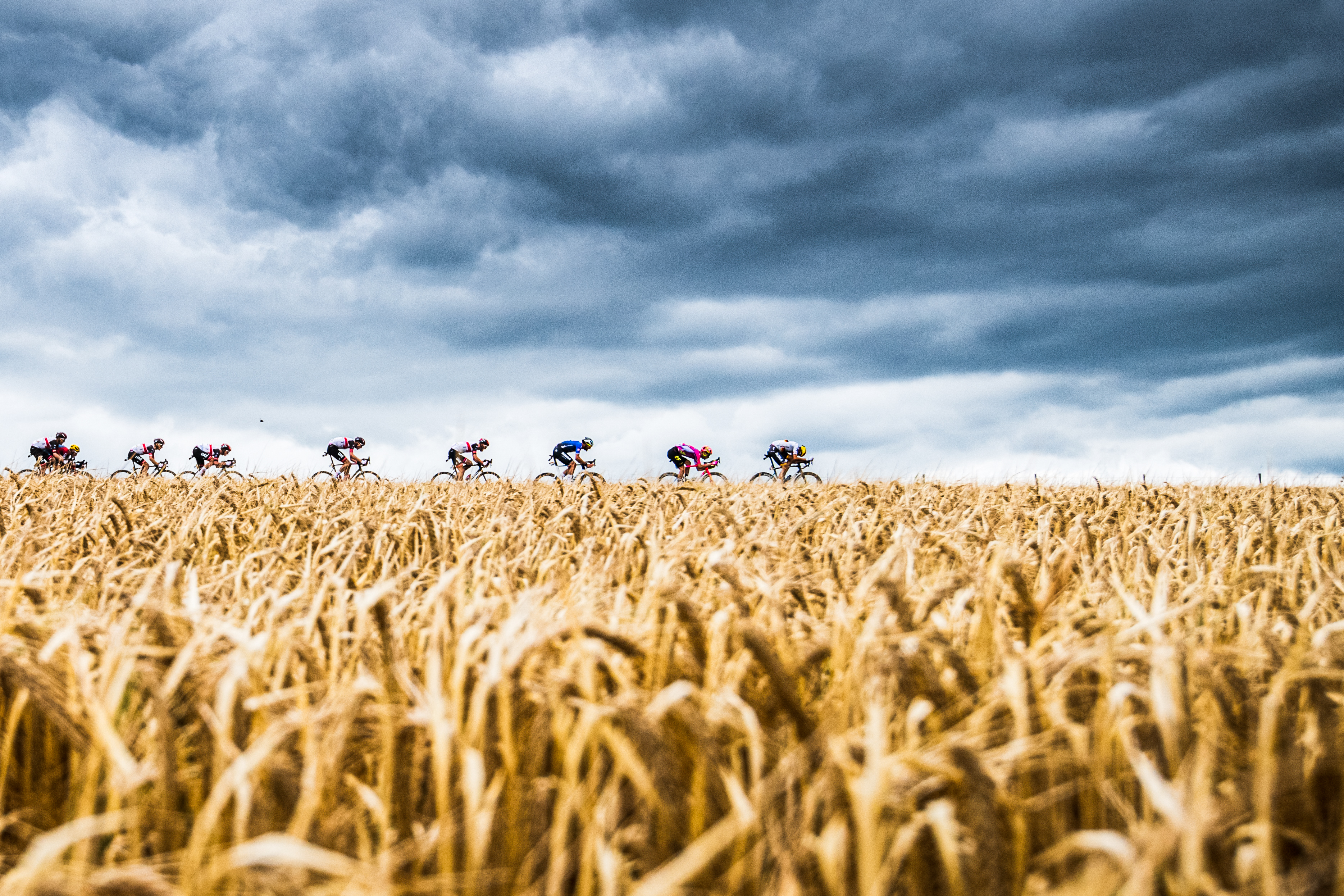
Tour de France 2022 – Stage 6 on 7 July 2022 – Binche/Longwy (219,9km). (Photo: supplied)
On the back of the reputation of Gay-Rees, camera crews have been given excellent access. And the shows themselves, particularly Drive To Survive, have done so much to create interest in new audiences that proponents of every sport are hoping theirs is next in line.
The format of these shows is embarrassingly consistent, but it works, and at least the depictions of athletes’ experiences are sincere and specific to their sport.
Break Point demonstrates the mental fortitude that tennis athletes have to achieve to keep on, despite failure after failure; Full Swing empathises with the frustration golfers feel at this technical, fickle sport; while Drive To Survive exposes a merciless dog-eat-dog side of Formula 1 and explores how dangerous it is. Tour de France: Unchained, more than the others, is about the sheer suffering of the slog that these athletes endure. Understanding the mental fortitude that cyclists have to maintain during training and the cut-throat races themselves affords a much greater appreciation of the sport.
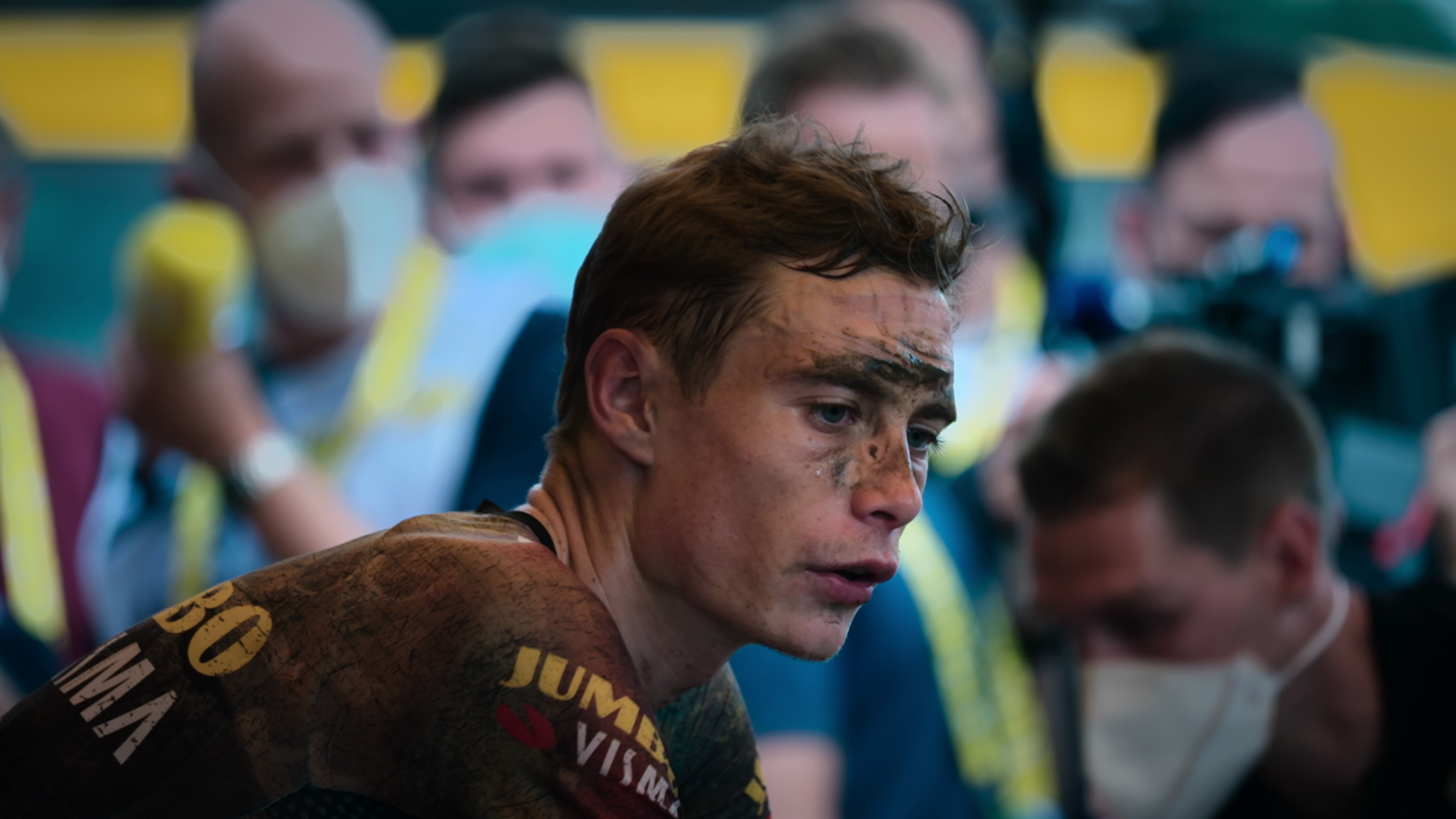
A production still from Tour de France: Unchained of Danish rider Jonas Vingegaard. (Courtesy of Netflix)
A closer look
The start of episode one is essentially a trailer – quick cuts of action shots and experts saying extreme things about how tough the race is. Cyclists and those already interested in the Tour de France know this stuff, this opening snare is to grab the people who don’t. That’s the elevator pitch for this documentary – it captures subtlety when it can, but the priority is concisely packaging what the enthusiasts already know in production quality slick enough to turn plebs into enthusiasts.
Exciting as it is, episode one is a little frantic, but the series calms down a bit after that. It isn’t any less entertaining, but the episode content is a little repetitive, with a lot of the same editing tricks used to create action.
One of the virtues of Box To Box productions is the “show don’t tell” writing. Background knowledge is dumped in extremely condensed chunks at the beginning of a scene, and anything else that an uninformed audience member would need to know is either inferred or explained in passing, so that it’s barely noticeable as exposition.
“The Tour de France is simple”, says ex-coureur professional Steve Chainel. “It’s 21 stages, there’s a stage winner every day, and the person wearing the famous yellow jersey is the rider who has the best time over the 21 stages. But cycling isn’t an individual sport. There are 22 teams, each made of eight riders who work together to carry their leader to victory.” That’s it. In 15 seconds, someone who’s never cared about the Tour de France has a basic understanding of how it works, and feels ready for the highlights and spicy controversies that complicate it.
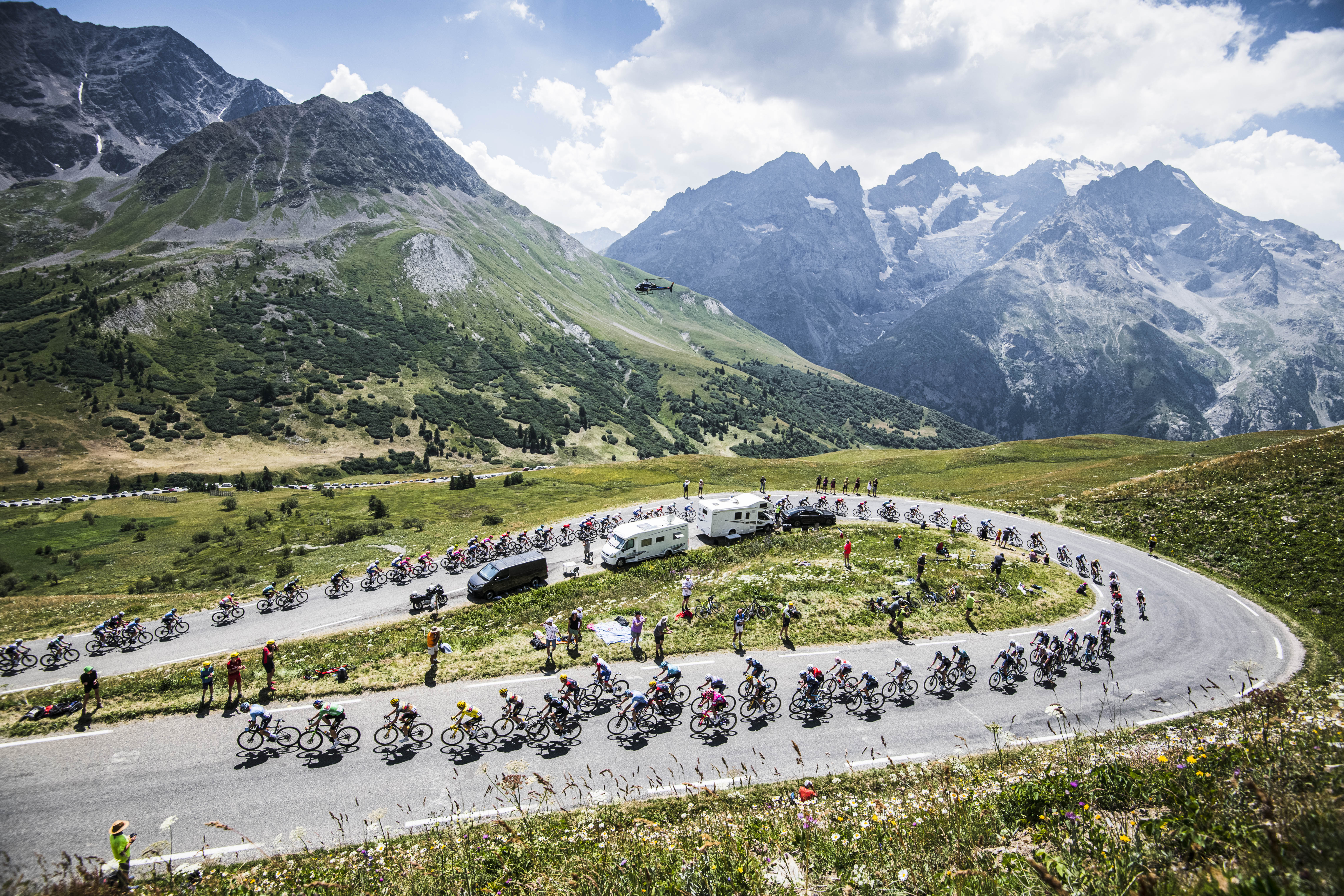
Tour de France 2022 – Stage 12 – Briancon/Alpe d’Huez – Col du Galibier (165,1km) – on 14 July 2022. (Photo: Charly Lopez)
Many people hear “Tour de France” and immediately think “Lance Armstrong doping” scandal. The series starts addressing the scandal in the first episode, but it’s clear that there’s a strong agenda to show that this low point in the race’s history does not define it. The series is very much rooted in the Tour’s present form rather than in its initially illustrious and eventually notorious history.
We see the day-to-day lives of iconic teams from their preparation and training to the finish line, plus all their stresses and feuds with other teams. Many perspectives and rivalries are explored in the series, but at the centre of it all is Tadej Pogačar – the two-time reigning champion and sweetheart of the cycling world – and Danish rider Jonas Vingegaard. Once you understand the unified workings of a team, an interview with Vingegaard, pissed off about his teammate’s surging to victory, becomes hot gossip, because it’s multifaceted – riders have to balance their solo ambitions with those of their teams.
The show leans into the drama of the war games that happen on the road, but their consequences are shown without glamour. From behind the balustrades, a crash is just part of the entertainment. Onlookers excitedly chatter about collisions and speculate about why it happened or joke about how silly these crazy riders are to put their bodies on the line. With so many athletes competing in such a popularised spectator event, there is a pervasive culture of dehumanisation.
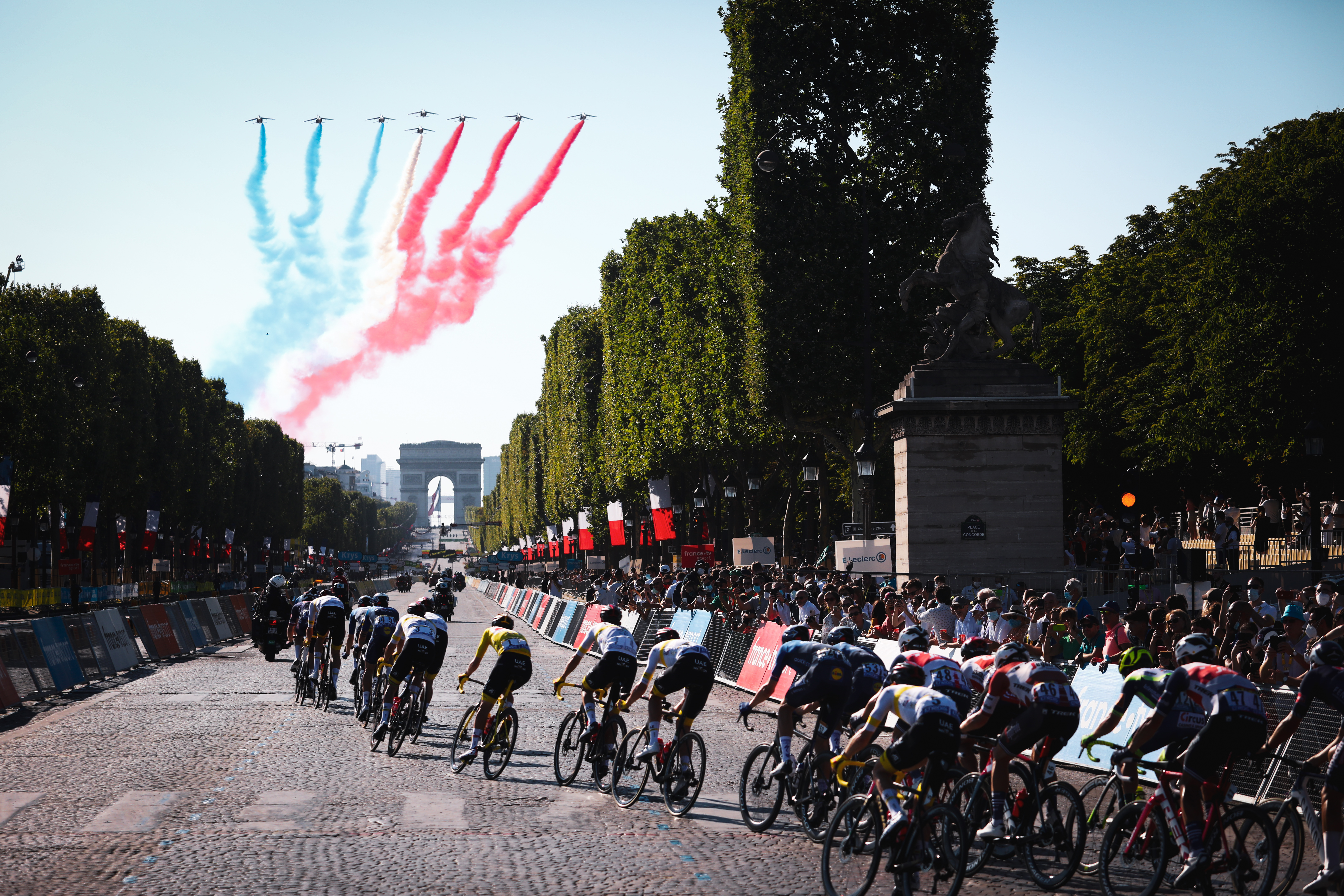
Tour de France 2021 – Stage 21 – Chatou/Paris Champs Elysees – Patrouille de France (108,4 km) on 18 July 2021. (Photo: Aurélien Vialatte)
Impact of a crash
The show makes certain the audience recognises what a crash means for a competitor. It can be life-changing, career-defining. Yet the athletes know the stakes better than anyone and are often still alarmingly stoic about it. We’re shown footage of Fabio Jakobsen’s awful crash a few years ago in which he almost died. He speaks about it casually, referring to “some nasty injuries” as if he were talking about a grazed knee.
Tour de France: Unchained has its shortcomings – its repetitiveness dilutes the excitement around the middle, and its blockbuster-style editing occasionally comes off as insincere. It’s a rather shocking oversight that the series didn’t feature a single story on the women’s race. But just like the show’s cousins before, it makes the sport accessible and entertaining to people who never cared about it before, and it will be interesting to see how big an effect this has on the viewership of the 2023 ongoing race. DM
Tour de France: Unchained is available in South Africa on Netflix.
You can contact We’re Watching via [email protected]


















Comments - Please login in order to comment.